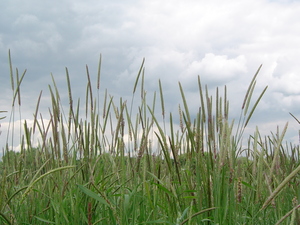The EU referendum debate is getting quite emotive. It is almost a carbon copy of the Scottish independence debate. There are those who support an improving status quo who are saying it would be a mistake to rock the boat and there are those who say that real progress will only be made if we are independent. The problem is that really no one knows what the future will hold and so the argument is between ‘project fear’ and ‘project faith’. It is sometimes easier for the ‘project faith’ lobby to be positive, an example being SNP’s assertion in the debate on Scottish independence that Scotland would reap huge rewards from North Sea oil. However, events conspired to show that this forecast was a little hollow.
In one or two aspects at least, the future of pesticides looks a little more certain. Resistance and registration issues will continue to increase. However, the full implications of both are not certain.
Unlike with fungicide and insecticide resistance, individual farmers can largely dictate the future of herbicide resistance on their own farms. Hence, they need to think about this issue with great care and, as I have said before, adopt a change in mindset. No longer should a low level infestation of weeds showing above a crop go un-rogued. This applies mainly to grass weeds but broad-leaved weeds such as charlock should also be removed if at all possible. In other countries there is herbicide resistance in charlock and its near relatives and it poses a huge problem in parts of Australia.
There is also a need to exploit the weaknesses of already resistant weeds. I was reminded of this the other day when I received an email from a Western Australian farmer who had read one of my recent blogs on managing black-grass between crops. He described a machine that crushes the seed of their extremely herbicide resistant rye-grass (Lolium rigidum) as it comes over the back of the combine. This approach has the ability to kill 50% of the viable seed that has been set in the harvested crop.

Wild-oats (Avena fatua) has fewer weak spots that can be exposed by changes in cultivation and time of sowing. It is both autumn and spring germinating and can emerge from greater depths, perhaps up to 15 cm. Its greatest weakness is that it shows above crops and hence is vulnerable to hand-roguing. There are a handful of populations that now show quite frightening levels of herbicide resistance and I am sure that it is advisable to reduce all populations to levels where they can be rogued if necessary.
The other forms of herbicide resistance in UK arable crops are common poppy, common chickweed and scentless mayw eed resistance to the ALS mode of action of the sulfonylureas and one or two other herbicides. In Spain, poppies have developed resistance to a range of modes of action. I have been trying to think of the weaknesses in their growth cycle that can be exploited by cultural control measures. Unfortunately, I cannot think of any other than either killing the crop, adopting grass leys in the rotation or mechanical weed control.
eed resistance to the ALS mode of action of the sulfonylureas and one or two other herbicides. In Spain, poppies have developed resistance to a range of modes of action. I have been trying to think of the weaknesses in their growth cycle that can be exploited by cultural control measures. Unfortunately, I cannot think of any other than either killing the crop, adopting grass leys in the rotation or mechanical weed control.
Hence, although herbicide resistant annual grass weeds get the headlines, it is the herbicide resistant broad-leaved weeds that could eventually have the greatest impact on our arable systems. So please ensure that there is a herbicide resistance strategy adopted on each arable farm, which generally means rotating herbicide modes of action. There is a temptation to use more sulfonylureas for broad-leaved control as more spring barley and wheat is grown on farms that have herbicide resistant black-grass. This should be tempered by a sound anti-resistance policy, partly because the future of some alternative modes of action is uncertain.
